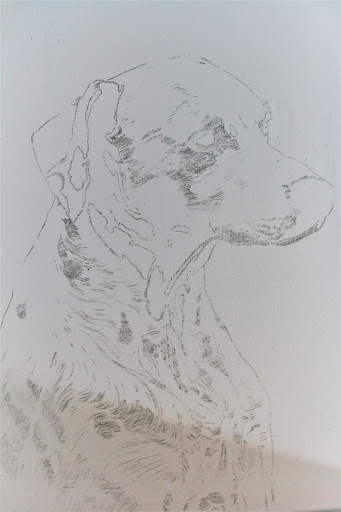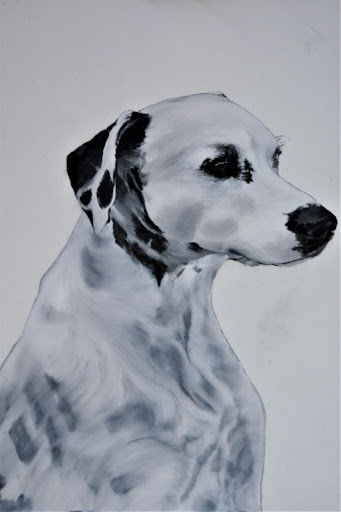These artist’s notes are copyright to Graham Baker and may not be shared or copied without permission. Any enquiries, please email to grahambaker@gmail.com.
24x18 inches. 60cm x 45cm. From a sketch to the completed monotone painting. The technique required only Linseed oil and Charcoal.
I transposed the drawing from the photo to the canvas by scaling up the drawing with a grid. The charcoal pencil I used was very sharp and applied lightly, it looked as it was floating on the surface of the canvas. After all it is just pigment.
The easiest way to paint this particular element is by layering. By establishing a basic form or shape then working the layers of colours from dark to light, within the shape, following the curves then finishing with the highlights. The traditional method is roughing out the work and going into detail as the work progresses. That in a few words describes layering.
I could see that layering wouldn’t work here. This is a monotone painting, the only colour would be the browns in his eyes. I didn’t want any background, nothing to distract from the hero of the painting. The technique would need to be something different, efficient.
He was an assertive male who showed excessive pride in his manliness. Friendly enough but I always walked around him.
I mixed a few drops of turps with some Linseed oil. This would help the mix flow off the brush easily. Next I painted the charcoal patches of the face and muzzle. The oil picked up the charcoal and spread it evenly. It was far easier to control than I imagined working a soft blend out to the edges and it was quick.
Naturally the tone levels dropped. The result was the tints and shades I needed to define his muscle tone.
The next step was to create the illusion of hair. This was done by pulling a large dry brush through the blended puddles in the direction of the hair. The fourth & fifth photos show I have brushed a darker colour around the ears and nose. Once again I pulled a dry brush through it. I took great care to make sure the paint dragged by the dry brush followed the flow of his coat, occasionally breaking the borders of the form.
How did I seal the painting? Well I could say I waited patiently for it to dry thoroughly. That would have taken too long. There was no need to seal it at all; it was essentially an oil painting. I also knew from experience if I sprayed it lightly with an oil based varnish the two wet surfaces would bond without reaction.
If oil paint is close to dry and I applied another layer of oil paint over it there would be a very good chance the thinner in the top coat would attack the binder ( medium ) of the first coat causing it to wrinkle up. Instead the wet on wet layers dried together without any reaction. I was pushing my luck a little, but have been doing this sort of thing with oils for years. It works mainly because the top coat was not thinner than the previous layer.
I was very happy with the process and the painting but I made a mistake when I painted the fine line down his back. I needed contrast. I should have blended a soft tone, slightly darker in value than the white background, along the outer edge of Matty’ s back. This would have given the illusion of the curve of the body and made the painting slightly more realistic.
These artist’s notes are copyright to Graham Baker and may not be shared or copied without permission. Any enquiries, please email to grahambaker@gmail.com.






